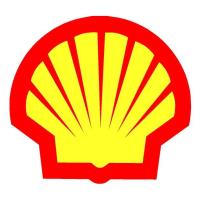-
From desk to deep water: Whale starts production
From desk to deep water: Whale starts production
Inside a 51-storey skyscraper in the central business district of New Orleans, engineers are starting up an oil platform which is 600 kilometres away in the Gulf of Mexico.
It is a significant milestone for the team because it is the first time that oil production at a Shell deep-water platform has been started from a control room on land.
This control room, a few minutes’ walk from the city’s famous French Quarter, is a replica of the one on the Whale oil and gas platform. Staff inside it can carry out the same tasks they would if they were out at sea: from controlling the flow of oil and gas to monitoring almost every aspect of the facility.
Whale is Shell’s latest platform in the Gulf of Mexico. “It is a game changer,” says Kimarie Michel, Whale’s senior operations manager. “I can have lunch in downtown New Orleans and within minutes I can be in the control room of a facility which is far out at sea. This saves times and money. It also reduces emissions.”
Over the past 22 years, Kimarie has worked on most of the Shell-operated deep-water facilities in the Gulf of Mexico. In the early part of her career, she had to be physically on a platform to carry out her tasks.
“Now I can run the facility from an office block because there is constant video connection with the folks on Whale,” she says.
Smaller scale Most of Whale’s operations can be managed from the shore. Engineers use virtual reality headsets to carry out checks. They also deploy drones to inspect other areas, keeping the number of people needed on the platform to a minimum.
The facility has been designed to hold just 60 people, compared to the 180 people that can live on the Shell-operated Appomattox platform in the Gulf of Mexico, which started production in 2019.
Weighing around 25,000 tonnes, Whale is a third of the weight of the Appomattox. Such smaller scale helped designers to cut the cost of building the facility.
Whale will be capable of producing around 100,000 barrels of oil equivalent a day at its peak, which is enough to fuel the daily journeys of 2.7 million cars in the US.
Senior operations manager, Kimarie Michel, and the Whale project manager, Oro Awaritefe, in the Whale control room in New Orleans
Reducing emissions
Lowering the headcount has also helped to reduce the emissions associated with the production of oil and gas on Whale.
“By moving the control room to the shore, we have reduced the number of flights, reduced our carbon footprint, and saved money,” says Oro Awaritefe, the Whale project manager.
“There is a safety aspect too. By flying fewer people out there, you are reducing the number of people directly working on a platform which produces hydrocarbons.”
Investing in oil and gas
Investments in oil and gas platforms such as Whale continue to be needed to meet the world’s energy demand while low-carbon alternatives are developed and made commercially available. At the same time, energy companies must find ways to produce oil and gas with lower greenhouse gas emissions.
Whale is a close replica of the Shell-operated Vito platform, which started production in the Gulf of Mexico in early 2023. Vito is significantly smaller than its original design, resulting in lower costs and emissions. Whale will operate with around 30% lower carbon intensity over its life cycle than Vito.
Power turbines are one of the biggest producers of emissions on offshore platforms. To reduce emissions on Whale, engineers have fitted waste-heat recovery units to all its power turbines. These units capture energy that would otherwise be lost to the atmosphere. This energy is then reused to heat the raw fluids so they can be exported from the platform.
The process of compressing gas before it is exported to the shore is another contributor to emissions on offshore facilities. To reduce these emissions on Whale, engineers have installed compressors which use less energy than a typical system.
“We’re continuously challenging our ability to reduce the operational emissions generated as we supply the oil and gas the world needs,” says Oro.
With Whale successfully up and running, some of Oro’s team are now focusing on the construction of a new energy-efficient offshore platform called Sparta, which will be a close replica of Vito and Whale.
Sparta is expected to start production in 2028… from a control room in Louisiana.
full article here:https://www.shell.com/news-and-insights/inside-energy-stories/from-desk-to-deep-water-whale-starts-production.html


